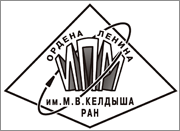|
|
Preprints of the Keldysh Institute of Applied Mathematics, 2007, 012, 32 pp.
(Mi ipmp467)
|
 |
|
 |
This article is cited in 2 scientific papers (total in 2 papers)
ConDat 1.0 — code for converting by the tracing algorithm the combinatorial geometry presentation to the bit-mapped one. Users guide
M. I. Gurevich, A. A. Russkov, A. M. Voloschenko
Abstract:
The algorithm of ConDat (Conversion of Data) code that converts the 3D combinatorial geometry presentation of the problem geometry to the user defined 2D (for given section of the problem) or 3D bit-mapped ones is discussed. To ensure mass of original materials conservation for any spatial cell of the mesh that overlays problem geometry additional mixtures are introduced for spatial cells, where a few original materials are included. In this approach, known as the volume fraction (VF) method, the homogenization procedure is applied for spatial cell volume. So, its error can be decreased to an acceptable level by the mesh refinement. The volume fractions of original material, required for this procedure, are calculated by the tracing algorithm. ConDat code was developed on the base of the geometrical module NCG of the Monte-Carlo MCU code for solving transport equation. The input of ConDat code is defined and some numerical examples and inputs for test problems are also given.
Citation:
M. I. Gurevich, A. A. Russkov, A. M. Voloschenko, “ConDat 1.0 — code for converting by the tracing algorithm the combinatorial geometry presentation to the bit-mapped one. Users guide”, Keldysh Institute preprints, 2007, 012, 32 pp.
Linking options:
https://www.mathnet.ru/eng/ipmp467 https://www.mathnet.ru/eng/ipmp/y2007/p12
|

| Statistics & downloads: |
| Abstract page: | 117 | | Full-text PDF : | 15 |
|




 Contact us:
Contact us: Terms of Use
Terms of Use
 Registration to the website
Registration to the website Logotypes
Logotypes








 Citation in format
Citation in format 
